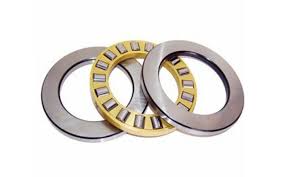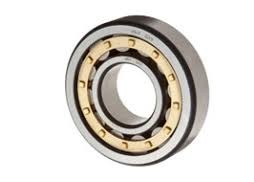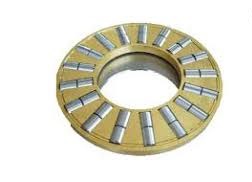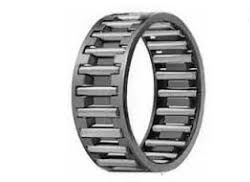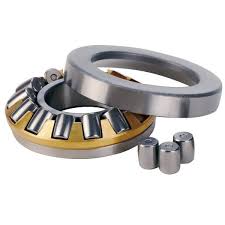
Conical roller bearing, have conical slats in the upper and lower rings, and the slatted part is also conical in them. This type of design makes the bearing suitable for bearing composite (radial and axial) loads. The bearing strength of the axial load depends on the angle of the outer ring slope.
Conical roller bearing
This product is detachable, with the inner ring together with the shelves and rollers forming a second outer ring. It is produced in various one-row, four-row and four-row varieties in two metric and inch sizes.
The special type of these bearings, known as TQ, has a special design on the inner edge with rollers that optimize the psychological action at that point of contact, as well as the slope of the rollers specially designed for proper load distribution. Reduced friction and increased load bearing strength are characteristics of this type of design.
Other special designs for use with heavy loads such as pinion roller bearings in automobile differentials. These roller bearings have a primary load and have advantages such as low friction (which also leads to less wear), shorter water retention time, the possibility of applying a larger load at the start of rotation and higher accuracy. These special designs are characterized by suffixes such as CL7C, CL7A.
Product Images
Single Row Taper Roller Bearings
This type of roller bearing is able to withstand axial loads from one direction. Under a radial load, a single axial load is produced in the bearing that must be restrained, so two rollers are usually used in applications.
One-row cone rollers are produced in two sizes, metric and inch. In inch size, the inner ring with the cone shelf has one number and the outer ring with the cup has another number, making a full cone rolling contain both of these numbers separated by a /.
For example:
K-11949/K-11910
The prefix K is a conical rolling symbol with dimensions of inches.
Paired Single Row Taper Roller Bearings
In cases where the use of a conical roller bearing is not sufficient to withstand the desired load or we have to position the shaft on both sides, we use two ready-to-install conical rollers.
The advantages of these products include ease of installation due to the lack of need to calibrate the spacing ring, accurate shaft axial guidance, determination of the shaft axial branch during construction, high axial and radial load bearing capacity, and easier maintenance and maneuvering through holes embedded in the spacing ring.
The arrangement of the bearings can be face-to-face, back-to-back or back-to-back. In a face-to-back installation, a transition ring is used between the outer rings.
In the back-to-back design of two spacing rings, one between the outer rings and the other between the inner rings, the advantage of this type of design over the previous type is that it bears the loads of the mast.
In a back-to-back design, the axial load is borne only on one side but by both bearings. In this case, a transition ring is used between the outer rings and one of the inner rings.
It should be remembered that any amount of shaft asymmetry in these types of double-barreled rolling bearings will shorten the life of the bearing.
The axial branch inside these rolling bearings is determined by the spacing ring. Any change in the normal branches is indicated by the suffix C together with a two- or three-digit number denoting the average value of the internal branch of the bearing in front of the bearing number.
The rack of these rolling bearings is also made of steel.


